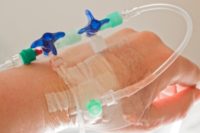The National Institute for Occupational Safety and Health (NIOSH) recently released its 2016 list of hazardous drugs in healthcare settings, updating the list to include 34 added drugs. Healthcare workers who prepare or give hazardous drugs to patients, such as those used for cancer therapy, as well as support staff may face individual health risks when exposed to these drugs.
8 million are exposed
NIOSH estimates 8 million U.S. healthcare workers are potentially exposed to hazardous drugs in the workplace. The new document, NIOSH List of Antineoplastic and Other Hazardous Drugs in Healthcare Settings, 2016, is the latest version of the hazardous drug list first published by NIOSH in 2004 as an appendix to the document, NIOSH Alert: Preventing Occupational Exposure to Antineoplastic and Other Hazardous Drugs in Health Care Settings.
“Hazardous drugs include those used for cancer chemotherapy, antiviral drugs, hormones, some bioengineered drugs, and other examples of hazardous drugs,” said NIOSH Director John Howard, M.D. “The NIOSH 2016 Hazardous Drug List is an important resource as well as a tool to raise awareness among workers about the hazards some drugs, enabling workers to take the necessary steps to protect themselves from exposure while doing their job.”
Engineering controls, PPE updated
This list categorizes drugs into the following groups: 1) Antineoplastic drugs 2) Non-antineoplastic hazardous drugs, and 3) Drugs with reproductive effects. The latest version of the list includes 34 drugs not found on previous lists, five of which include the manufacturer’s safe-handling warnings. General guidance on engineering controls and personal protective equipment for various activities that may be encountered in healthcare settings has also been updated. NIOSH made previous updates to the list in 2014, 2012, and 2010.
Additionally, the new document provides healthcare organizations with information on how to generate a list of hazardous drugs specific to their workplace as well as resources for evaluating the hazard potential of a drug.
The new publication can be found here. For more information on hazardous drug exposures in healthcare, visit: http://www.cdc.gov/niosh/topics/hazdrug/. For additional recommendations on methods and personal protective equipment (PPE) to minimize exposure to hazardous drugs, visit http://www.cdc.gov/niosh/docs/wp-solutions/2009-106/
NIOSH is the federal institute that conducts research and makes recommendations for preventing work-related injuries, illnesses, and deaths. For more information about NIOSH visit http://www.cdc.gov/niosh/.



